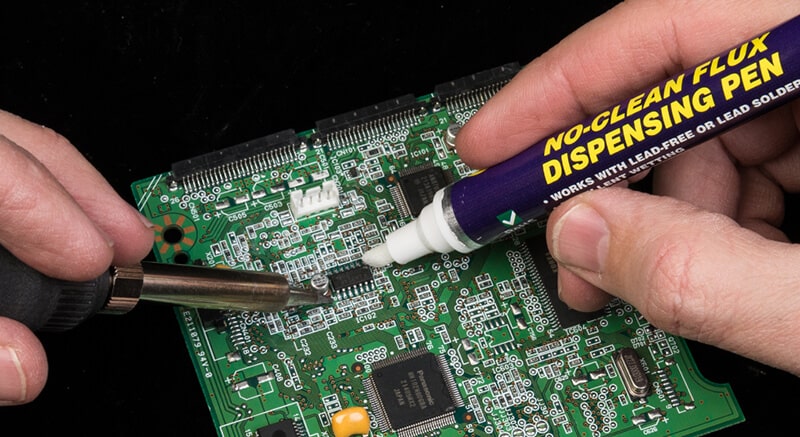General, quoting & support.
Add: Building E, No.58, Nanchang Road, Xixiang , Baoan District Shenzhen City, Guangdong, China
Tel : 0755-27348887
Fax : 0755-27349876
E-mail : svc@pcbastore.com
Lead solder vs Lead free solder
Simon / 2021-09-11
Contents [hide]
Many individuals think of soldering as something that is done by professionals, but in reality, it can be an easy process to learn if you know what you're doing. In fact, there are many ways to do soldering on your own without having any special equipment or training. This article seeks to give you everything you'll need to know about lead solder vs. lead-free solder.

What are Lead Solder and Lead-Free Solder?
Lead solder is the one that encompasses lead and tin. It's used for most electronics manufacturing processes such as PCB assembly, SMT components mounting, etc. The main advantage of using lead solder is forming strong joints with other metals like copper and aluminum. However, due to environmental concerns, manufacturers have been switching over from lead solder to lead-free alternatives. These include SnPb eutectic, Tin - Silver, and Pure Gold.
Lead-free solder is the one that's manufactured without containing any toxic materials. They're also known as non-toxic solder because they don't contain heavy metal elements, which could cause health problems. There are two types of lead-free solder; soft and hard. Soft solder contains more than 50% silver, while hard solder has less than 10%. Both these types of solder are widely used today.
Advantages of Using Lead Solders
There are several advantages of using lead solder when compared to lead-free solder. Some of them are listed below:
Strong joint formation between different metals
This means that lead solder will provide better electrical conductivity between various metals. For example, lead solder offers a good connection between copper and nickel-plated steel. On the contrary, lead-free solder won't work well with those metals.
Easy to use
Unlike lead-free solder, lead solder requires no fluxes or cleaning agents before applying. You just apply the solder paste directly onto the surface where you want to connect the wires together. After heating up, the molten solder flows into the gaps between the wire ends. Once cooled down, the solder solidifies, forming a permanent bond.
Great wettability
The wetting property of lead solder makes it easier to flow around small holes and narrow spaces. As a result, it allows you to make connections quickly and easily.
Low Melting Point
When comparing lead solder to lead-less solder, the melting point of lead solder is higher at 183℃, whereas lead-free solder melts at 165℃. Therefore, lead solder is not suitable for high-temperature applications.
Reworking
Since lead solder forms stronger bonds, reworking becomes difficult. That's why it's essential to select the right type of solder, depending on the application. If you plan to reuse the board after soldering, then go ahead and buy lead solder. Otherwise, get yourself some lead-free solder.
The disadvantage of Using Lead Solder
Although lead solder offers numerous benefits, there are some disadvantages too. Here are some of them:
Toxic fumes produced during melting
When heated, lead solder produces poisonous gases called hydrogen cyanide and carbon monoxide. If not properly handled, these gases may pose serious risks to human life. Therefore, proper ventilation systems must be installed at all times.
Poor heat dissipation properties
The high thermal resistance of lead solder makes it difficult to dissipate excess heat generated during soldering operations. As a result, overheating occurs easily, causing damage to nearby electronic devices.
High risk of fire
The flammability of lead solder increases significantly once exposed to air. Hence, care must be taken whenever working with lead solder.
Costly
Compared to other types of solder, lead solder costs much more. It can cost anywhere from $0.50 per pound to over $1.00 per pound. This price difference depends largely upon the purity level of your chosen solder. The lower the percentage of impurities in the alloy, the cheaper the product.
Lead vs. Lead-Free Solder Explained
To understand how lead solder works, let's first look at what happens in the case of lead-free solder. When lead-free solder comes in contact with oxygen, an oxide layer forms over its surface, preventing further oxidation. This process continues until the solder reaches room temperature. At this stage, the solder has become completely oxidized and can no longer form strong joints. To prevent such problems, manufacturers have developed several types of lead-free solder, including tin-silver, tin-copper, and tin-zinc. These three types of lead-free soldiers differ mainly based on their composition. The following points exhibit the differences between Lead vs. Lead-Free Solder.
1. Tin-Silver
This kind of solder contains silver as well as tin. Silver acts like a catalyst that helps reduce the amount of oxygen present in the solder. In addition, silver also improves the electrical conductivity of the joint. On the other hand, tin serves as a base metal that provides strength to the solder. It also reduces the possibility of corrosion by acting as a protective agent against moisture.
2. SnCu
SnCu solder consists of both tin and copper. Copper plays two roles here; one is to improve the mechanical strength of the solder, while another role is to increase its electrical conductivity. However, since copper is more expensive than tin, most manufacturers use only small amounts of copper in their products.
3. SnZn
SnZn solder contains zinc along with tin. Zinc is used because it lowers the melting point of the solder. Since zinc is less expensive than tin, many companies prefer using zinc instead of tin.
Reasons to use Lead-Free Solder
There are various reasons why you might want to switch your PCB manufacturing processes from traditional leaded solder to lead-free solder. Some of those include:
Lower cost
Since lead-free solder costs much lower than leaded solder, it becomes easier for smaller businesses to afford the new technology. Moreover, compared to conventional methods, lead-free solder requires fewer steps and saves time and money.
Environment friendly
Unlike lead solder, lead-free solder does not produce toxic fumes or waste materials. Therefore, there will be no need to dispose of these wastes in landfills. Also, unlike lead solder, lead-based solder cannot contaminate water sources.
Safety
When dealing with lead solder, there is always a chance of getting burned due to its highly combustible nature. But if you work with lead-free solder, then the chances of being injured are very low.
No pollution
As mentioned earlier, lead solder produces harmful gases and residues after burning. Such substances pollute our environment and cause serious health hazards. With lead-free solder, however, there is no risk of any environmental contamination.
How Should We Choose the Best Lead Soldering Solution?
Choosing the right type of solder depends on how often you plan to perform soldering tasks. If you only intend to make occasional repairs, then lead solder would suffice. However, if you need to do frequent soldering jobs, then lead-free solder might prove beneficial. The following factors can help you decide whether lead solder or lead-free solder is ideal for your needs:
Form
There are different types of solder, including wire, bars, spheres, paste, and preforms. Each form has its own advantages and drawbacks. For example, when using bar or sphere solder, you have more control over the amount of solder used. On the other hand, paste solder tends to spread out, making it hard to use in tight areas. Preform solder comes as an option that eliminates the problem associated with spreading. It also provides better control over the amount of material applied. In addition, preformed solder does not produce toxic fumes like those emitted by molten solder.
Cost
If cost is a concern, then lead-free soldiers tend to offer lower prices than their counterparts. This is because they're less expensive to manufacture. Also, since they don't contain any hazardous materials, they require fewer safety precautions.
Safety
If you want to ensure safe soldering practices, then stick to lead-free solder. These products come without harmful chemicals such as cadmium, mercury, arsenic, etc. They also eliminate the possibility of producing dangerous fumes. Moreover, lead-free solder doesn't cause health problems, unlike lead solder, which contains heavy metals.
Wiring requirements
When choosing lead solder, keep in mind that it works well when connecting two different types of metal surfaces. This includes copper and brass but also aluminum and stainless steel. On the other hand, lead-free solder has a wider application range, including the use of metals like tin and silver, nickel, and gold, among others.
Size
In terms of size, lead solder is larger than lead-free solder. You'll find them available in sizes ranging from 0402 to 1oz. While lead-free solder ranges from 0201 to 2oz, depending on the manufacturer's preference.
Availability
If you live near an electronics store, then buying lead solder directly from them might be convenient. On the other hand, purchasing lead-free solder online might require some effort and additional shipping charges. So before making a purchase, check out all available options so that you don't get stuck with something that doesn't suit your requirements.
Conclusion
Both lead solder and lead-free solder offer their own advantages and disadvantages. When deciding what kind of solder will work best for your PCB manufacturing projects, consider cost, safety, wiring requirements, and ease of handling before settling on one particular brand.







